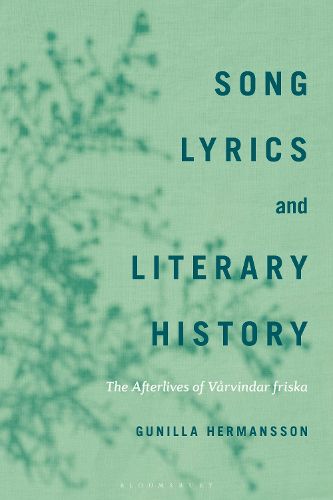Readings Newsletter
Become a Readings Member to make your shopping experience even easier.
Sign in or sign up for free!
You’re not far away from qualifying for FREE standard shipping within Australia
You’ve qualified for FREE standard shipping within Australia
The cart is loading…






Paving new paths for the study of the history of literature, this study explores the intricate networks of one single poem across two centuries - the 'Varvindar friska', a poem meant to be sung.
The Swedish song 'Varvindar friska' (Fresh Spring Breezes) started its public life in 1828 between the covers of a book, as a poem written to a traditional melody. Since then, it has been reprinted, translated, performed, and used in the most surprising contexts, in different corners of the world. This particular case may be rather exceptional, but Gunilla Hermansson argues that the underlying dynamics are not - and yet they have been underexposed in studies of literary history. This exploration of 'Varvindar friska' reveals the rich and intricate network of one text and uncovers new facets of how people have engaged with word art in their everyday lives in the modern era.
This network includes untraditional yet widespread uses of poetry and lyrics in lonely hearts columns and railway work - and seemingly strange bedfellows, such as a constellation of Nordic 'folk songs' and American plantation songs. The afterlives of this song evoke questions concerning class, gender, race, citizenship, technology, and modernity from new angles, as well as theoretical and methodological questions of circulation, textual instability, canonization, paradigmatic turns, uses and 'misuses'.
Song Lyrics and Literary History demonstrates how poetry is transformed when shared across time, borders, media and social and ideological divides. Being attentive to poetry-meant-to-be-sung, Hermansson argues, opens to a fuller and more representative picture of the cultural history of literature.
$9.00 standard shipping within Australia
FREE standard shipping within Australia for orders over $100.00
Express & International shipping calculated at checkout
Paving new paths for the study of the history of literature, this study explores the intricate networks of one single poem across two centuries - the 'Varvindar friska', a poem meant to be sung.
The Swedish song 'Varvindar friska' (Fresh Spring Breezes) started its public life in 1828 between the covers of a book, as a poem written to a traditional melody. Since then, it has been reprinted, translated, performed, and used in the most surprising contexts, in different corners of the world. This particular case may be rather exceptional, but Gunilla Hermansson argues that the underlying dynamics are not - and yet they have been underexposed in studies of literary history. This exploration of 'Varvindar friska' reveals the rich and intricate network of one text and uncovers new facets of how people have engaged with word art in their everyday lives in the modern era.
This network includes untraditional yet widespread uses of poetry and lyrics in lonely hearts columns and railway work - and seemingly strange bedfellows, such as a constellation of Nordic 'folk songs' and American plantation songs. The afterlives of this song evoke questions concerning class, gender, race, citizenship, technology, and modernity from new angles, as well as theoretical and methodological questions of circulation, textual instability, canonization, paradigmatic turns, uses and 'misuses'.
Song Lyrics and Literary History demonstrates how poetry is transformed when shared across time, borders, media and social and ideological divides. Being attentive to poetry-meant-to-be-sung, Hermansson argues, opens to a fuller and more representative picture of the cultural history of literature.